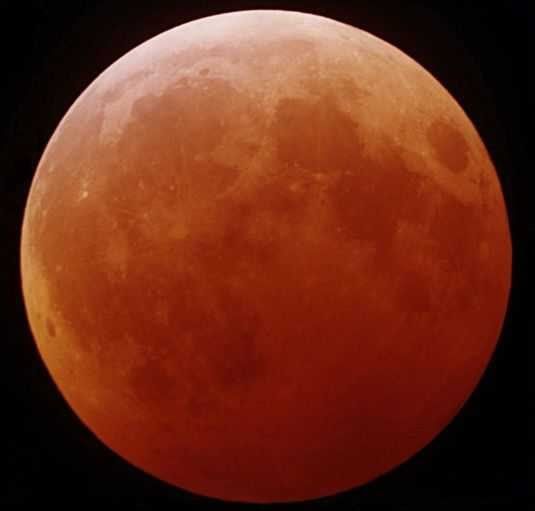Today's Sermon
How will the moon look on Oct 27th?
Corpse white.
Pumpkin orange.
Blood red.
Maybe all three.
Step outside and see for yourself.


Since ancient times the Full Moon has been associated with ghosts, hauntings and the supernatural. In October, the Full Moon is referred to as the" Blood Moon." Late October is also traditionally a time when spirits of ancestors, as well as other ghosts are thought to return to visit the living, during the celebration of Halloween, or Samhain (Sow-en) to the ancient Celts & modern pagans.
In early Ireland, and in our modern day, "Dumb Suppers" are held, where a place is set at the supper table for the visiting dead. The living ate in silence throughout the Dumb Supper. Such ghostly meals were based on a belief that the dead would make one last appearance before the sun and earth slip into the shadows of winter, in order to bid the living well and partake of this last feast. The Dumb Supper is still practiced on the Isle of Man. A seance usually follows.
In England, something similar was called "a soulin" where people played tricks on neighbors and begged for food in frightening costumes or masks that were used to scare away evil spirits. This was the precursor of our modern day trick or treat.
Lunar eclipses have been noted as spiritually important by ancient peoples universally, as they believed eclipses sharpened the Full Moon's mysterious, ghostly powers, if you will, causing change, sometimes death, bringing about supernatural visions, thereby heightening the appearances of ghosts, spirits, and phantoms. When viewed from the earth, the moon appeared to turn blood red in color and so was referred to as "Blood On the Moon." LINK
--OR--
A total lunar eclipse occurs when the Moon travels completely into the Earth's umbra, the dark inner portion of the shadow. The Moon's speed through the shadow is about one kilometer per second, and the total eclipse may last up to 102 minutes. However, the time between the Moon's first contact with the umbra and last contact, when it has completely exited the umbra, may be several hours. If only part of the Moon enters the umbra, it is called a partial lunar eclipse.
The Moon doesn't completely disappear as it passes through the umbra because of the refraction of sunlight by the Earth's atmosphere. The amount of refracted light depends on the amount of clouds or dust in the atmosphere blocking the light. This causes the Moon to glow with a coppery-red hue that varies from one eclipse to the next. The following scale was devised by Andrè Danjon for rating the overall darkness of lunar eclipses:
- 0. Very dark eclipse; Moon almost invisible, especially in midtonality
- 1. Dark eclipse; gray or brownish coloration; details distinguishable only with difficulty
- 2. Deep red or rust-colored eclipse, with a very dark central part in the umbra and the outer rim of the umbra relatively bright
- 3. Brick-red eclipse, usually with a bright or yellow rim to the umbra
- 4. Very bright copper-red or orange eclipse, with a bluish, very bright umbral rim
Because the Moon's orbit around the Earth is inclined 5° with respect to the orbit of the Earth around the Sun, lunar eclipses do not occur at every full moon. For an eclipse to occur, the Moon must be near its orbital node—the intersection of the orbital planes. Passing through the shadow at or very close to the node results in a total or partial eclipse. LINK

Today's Question:
Which Blood On The Moon explanation is more titillating?
Whatever your belief this week...
Go forth and gather Hallowe'en candy in abundance!
Thus endeth today's sermon.







0 Comments:
Post a Comment
<< Home